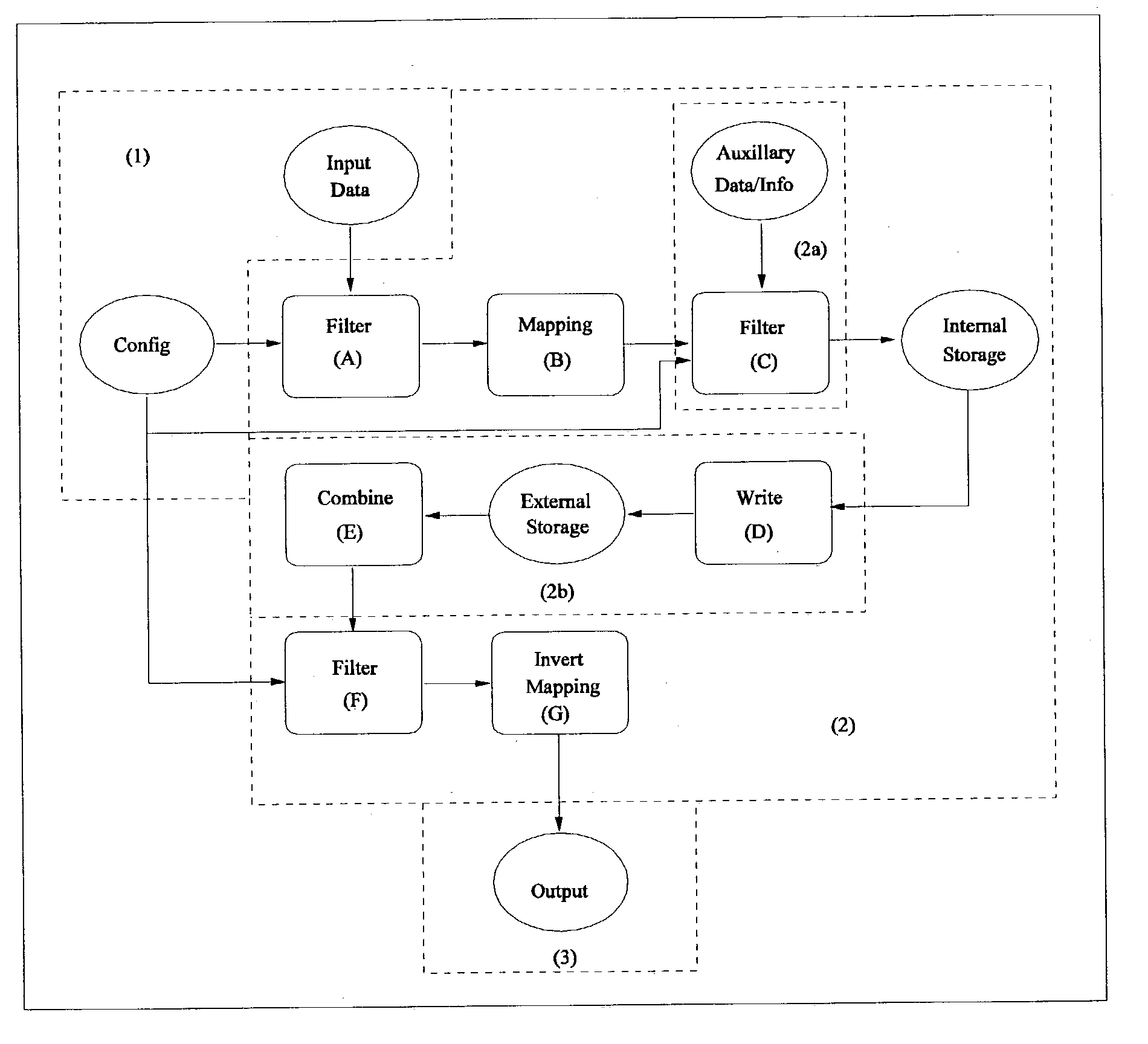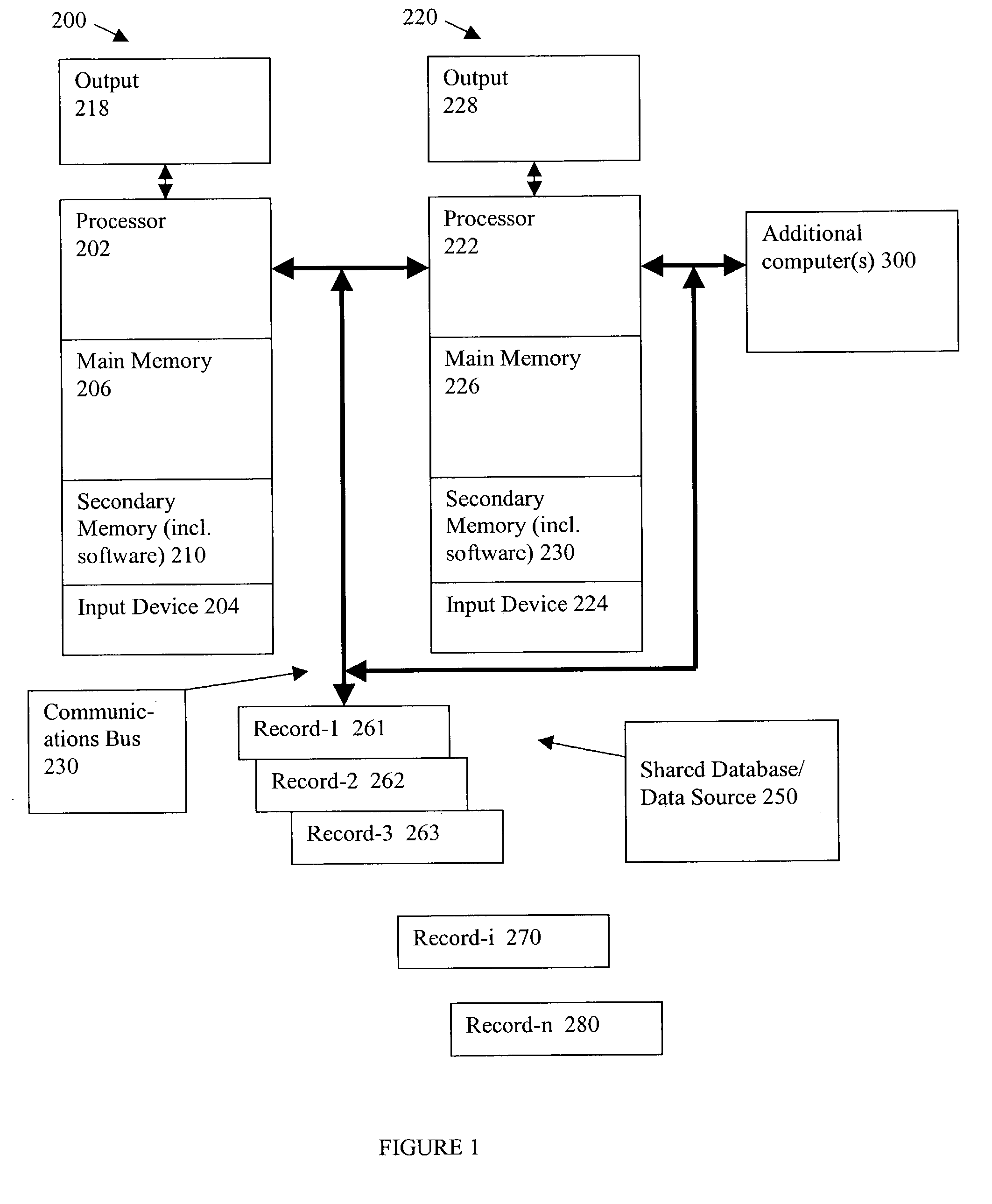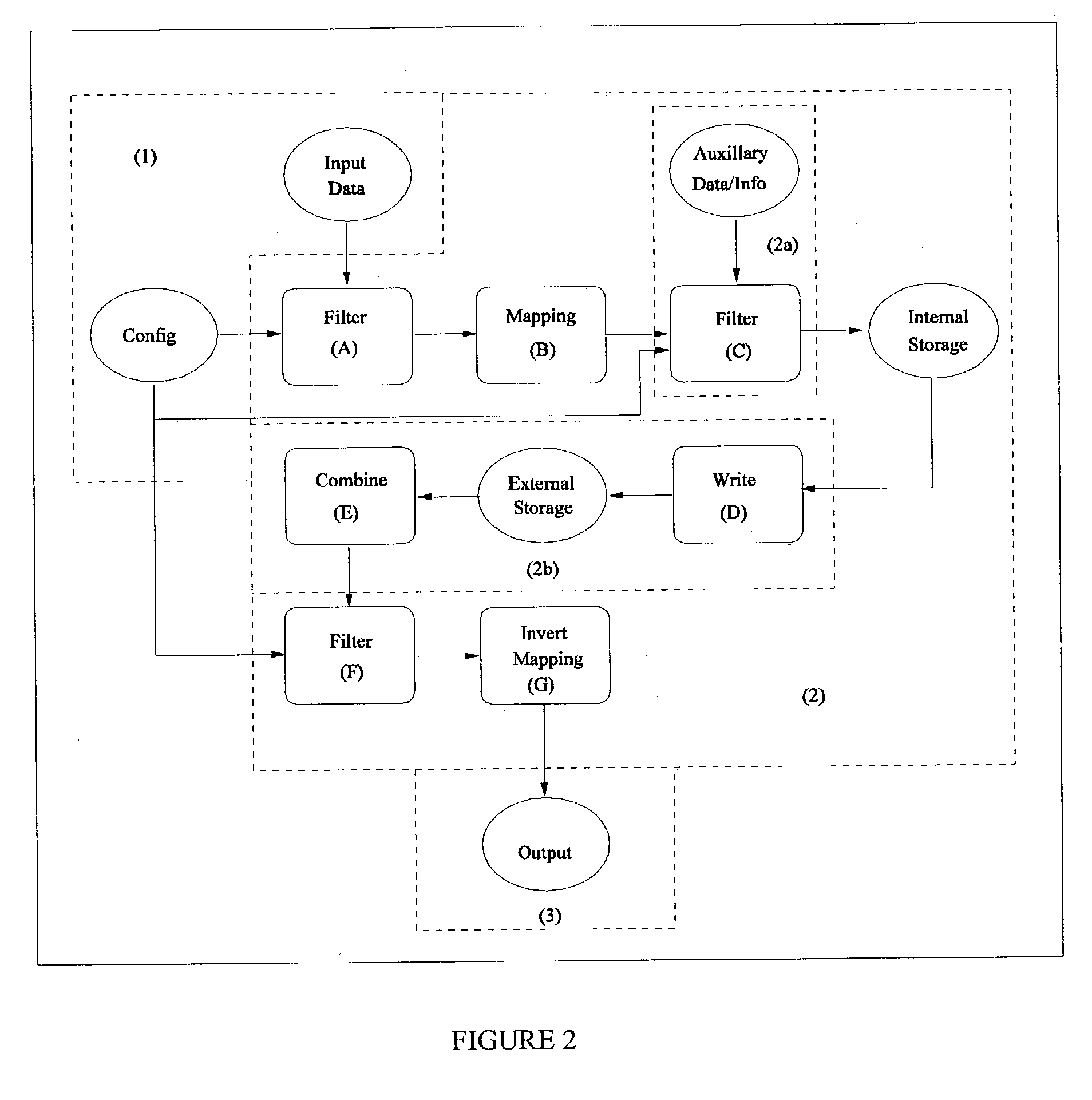Method and system for data processing for pattern detection
a data processing and pattern detection technology, applied in the field of patterns analysis, can solve the problems of difficult to avoid assumptions that are concerned with physical and electronic limitations of computers, difficult to reduce to practice and maintainability of software, and difficult to achieve parallelization calculations
- Summary
- Abstract
- Description
- Claims
- Application Information
AI Technical Summary
Benefits of technology
Problems solved by technology
Method used
Image
Examples
example
[0197]LetN=4andk=2.(0,0)->(0,1)->(01)+(12)=0(0,1)->(0,2)->(01)+(22)=1(1,1)->(1,2)->(11)+(22)=2(0,2)->(0,3)->(01)+(32)=3(1,2)->(1,3)->(11)+(32)=4(2,2)->(2,3)->(21)+(32)=5(0,3)->(0,4)->(01)+(42)=6(1,3)->(1,4)->(11)+(42)=7(2,3)->(2,4)->(21)+(42)=8(3,3)->(3,4)->(31)+(42)=9LetN=4andk=3.(0,0,0)->(0,1,2)->(01)+(12)+(23)=0(0,0,1)->(0,1,3)->(01)+(12)+(33)=1(0,1,1)->(0,2,3)->(01)+(22)+(33)=2(1,1,1)->(1,2,3)->(11)+(22)+(33)=3(0,0,2)->(0,1,4)->(01)+(12)+(43)=4(0,1,2)->(0,2,4)->(01)+(22)+(43)=5(1,1,2)->(1,2,4)->(11)+(22)+(43)=6(0,2,2)->(0,3,4)->(01)+(32)+(43)=7(1,2,2)->(1,3,4)->(11)+(32)+(43)=8(2,2,2)->(2,3,4)->(21)+(32)+(43)=9(0,0,3)->(0,1,5)->(01)+(12)+(53)=10(0,1,3)->(0,2,5)->(01)+(22)+(53)=11(1,1,3)->(1,2,5)->(11)+(22)+(53)=12(0,2,3)->(0,3,5)->(01)+(32)+(53)=13(1,2,3)->(1,3,5)->(11)+(32)+(53)=14(2,2,3)->(2,3,5)->(21)+(32)+(...
first embodiment
5.4.1 First Embodiment of Invention
[0312]In section 3, a summary of the processing steps entailed in the present invention were presented. In this section, we first review the steps presented earlier and then present a more complete description of these embodiments.
[0313]In the embodiment of the invention illustrated in FIG. 2, a method for processing records from a data source and for determining a general form of the distribution of patterns or a subset within such records entails:[0314]1. Providing input data in the form of records.[0315]2. Filtering the input in accordance with an analysis configuration to prepare attributes and k-patterns for mapping by a bijection (or other invertible mapping) and to select only those records relevant to analysis.[0316]3. Defining a mapping for the k-patterns to be analyzed into a co-domain of keys using the bijection.[0317]4. Calculating information pertaining to the patterns found within the processed records, using the keys defined for trac...
PUM
 Login to View More
Login to View More Abstract
Description
Claims
Application Information
 Login to View More
Login to View More - R&D
- Intellectual Property
- Life Sciences
- Materials
- Tech Scout
- Unparalleled Data Quality
- Higher Quality Content
- 60% Fewer Hallucinations
Browse by: Latest US Patents, China's latest patents, Technical Efficacy Thesaurus, Application Domain, Technology Topic, Popular Technical Reports.
© 2025 PatSnap. All rights reserved.Legal|Privacy policy|Modern Slavery Act Transparency Statement|Sitemap|About US| Contact US: help@patsnap.com



